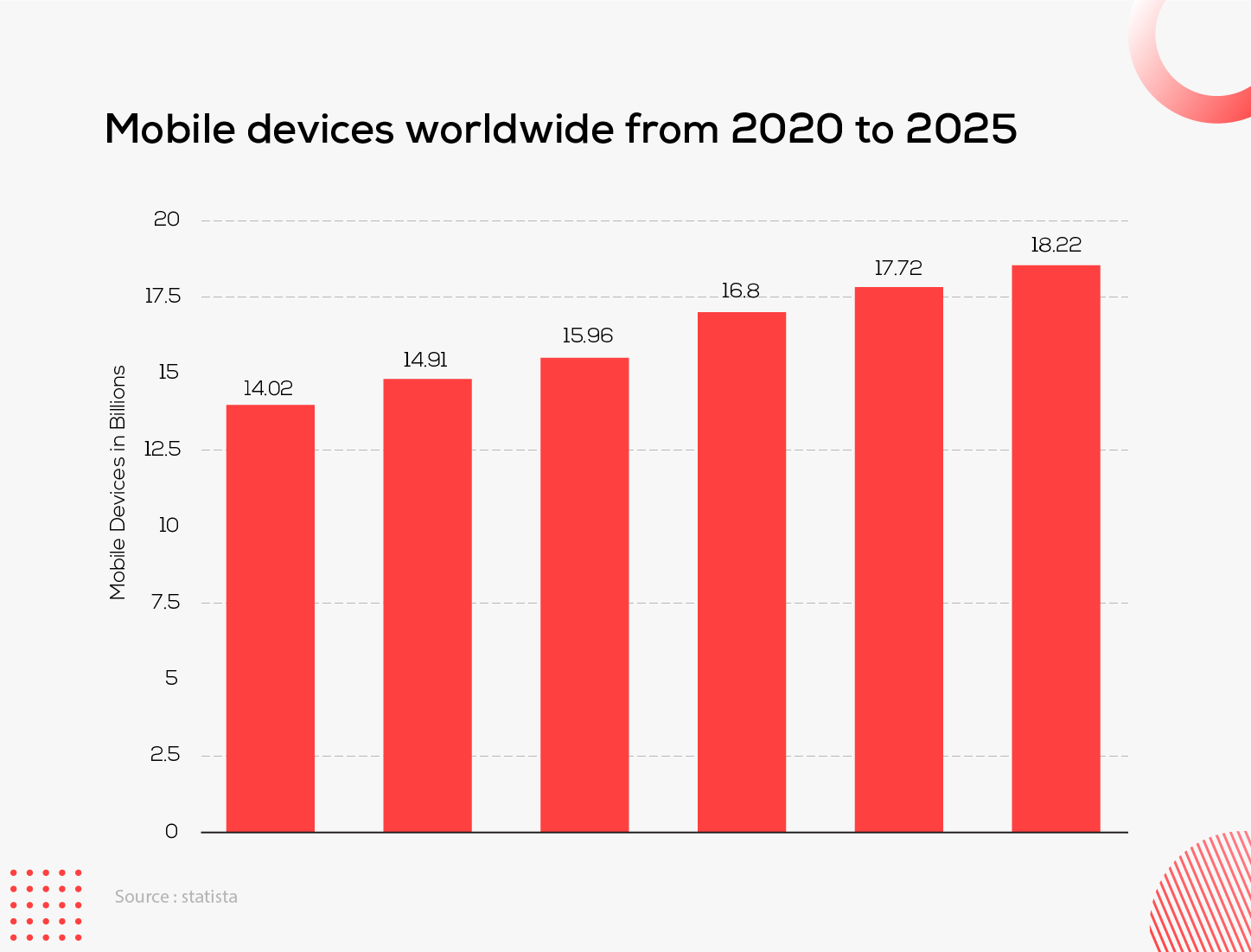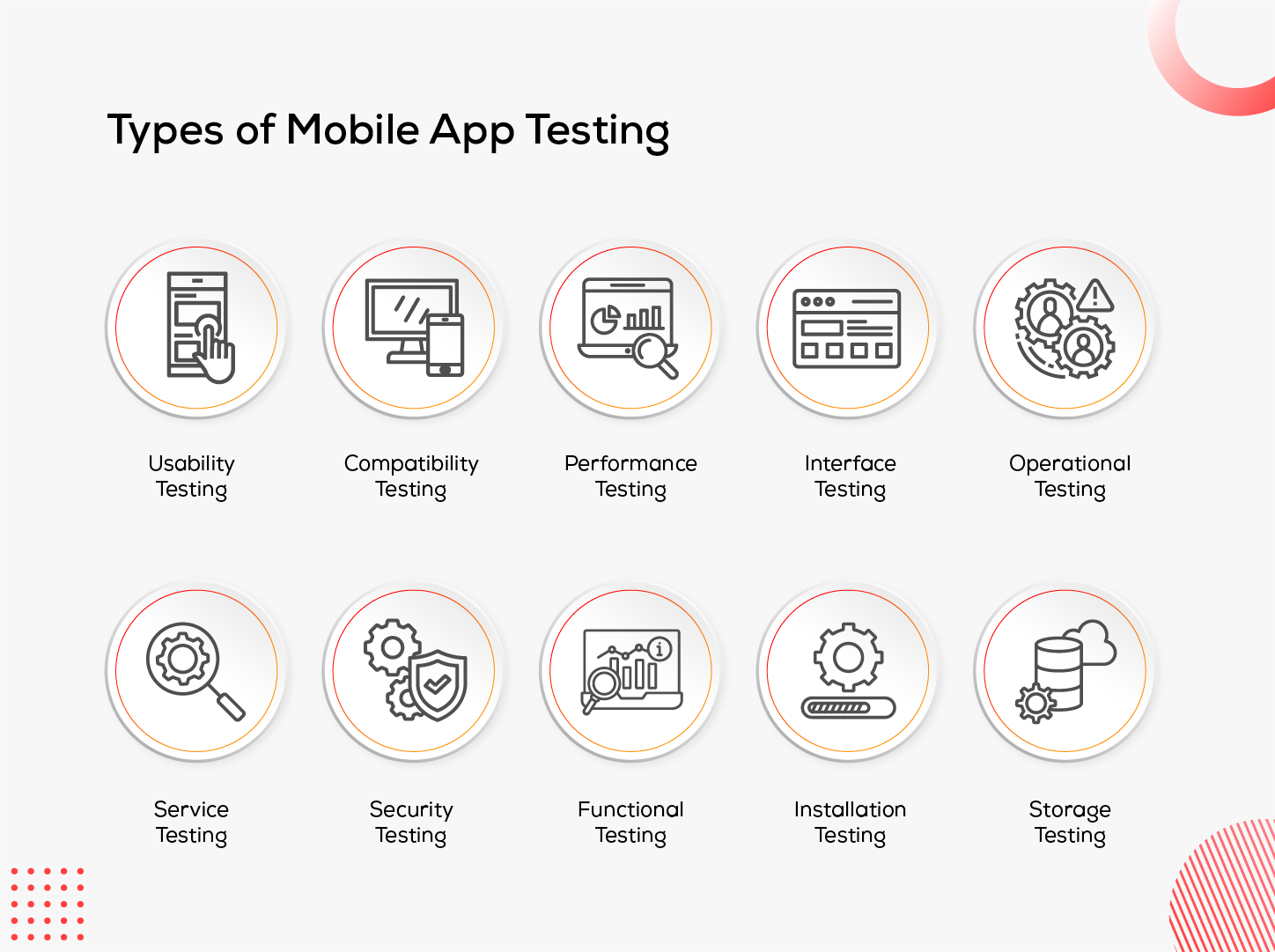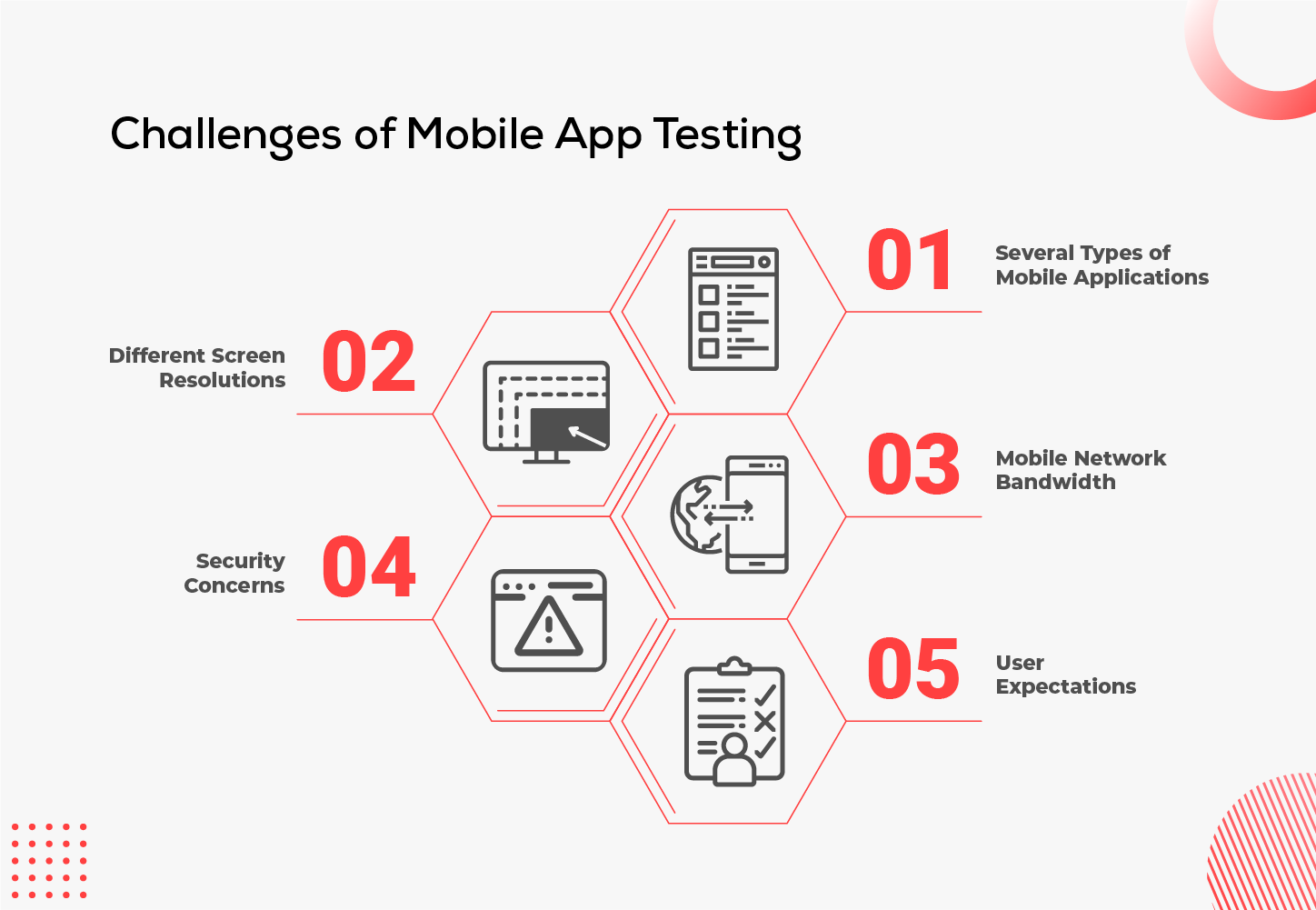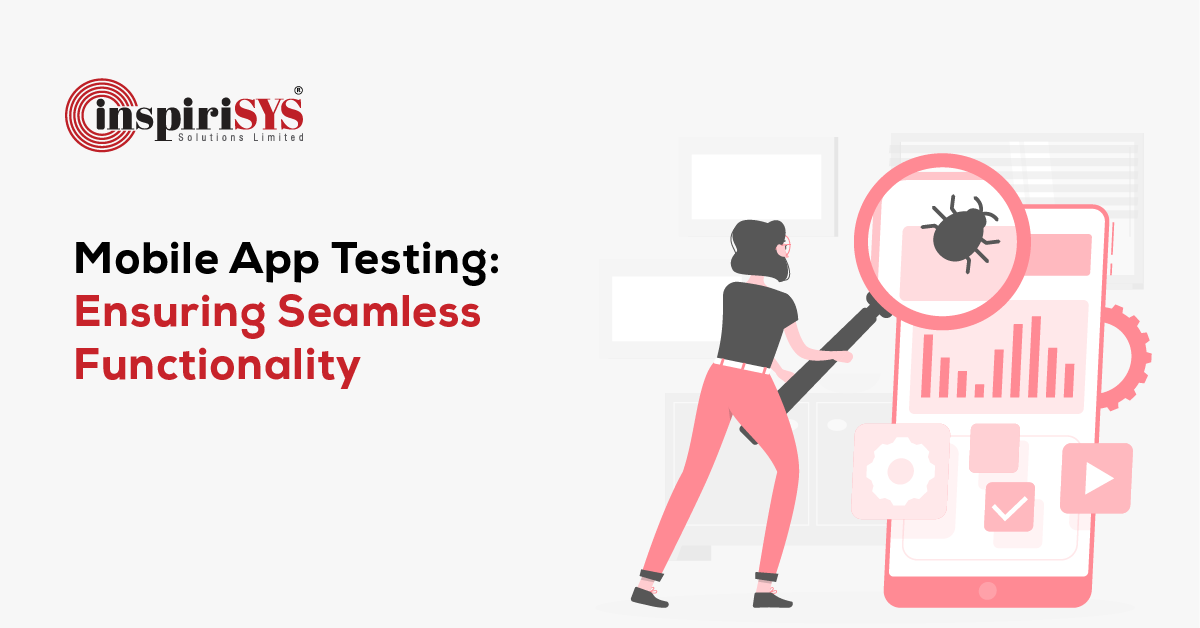Quick Summary: The worldwide demand for mobile app devices is growing at a faster pace in the era of digital transformation. To meet customer needs, businesses stand in a position to emphasize Mobile App Testing. Explore the Mobile App Testing, shedding light on its different types, challenges, and best practices.
The world of mobile technology has undergone a striking transformation over time. From the earliest days of basic voice calls to the present era of fast internet speeds, mobile technology has changed the way we communicate, work and live. The creation of numerous mobile apps has caused this dependency on mobile devices to proliferate and in turn, these apps help businesses achieve success.
Businesses now rely heavily on mobile apps to expand their operations and interact with their customers. The growth of mobile apps has led to a rapid increase in mobile testing within the app development process. This testing is essential to assess performance, security and usability.
Before diving into the topic, let’s explore some fascinating statistics concerning Mobile App Testing.
According to a study conducted by Statista, the number of mobile devices worldwide is expected to reach 18.22 billion by 2025.

What is Mobile App Testing?
As the name suggests, mobile app testing is a platform where apps are tested for usability, consistency, basic functionality and performance.
This helps to ensure that it aligns with business and technical requirements. Since there is a high demand for mobile apps, it is important to check the functionality before they get into the market. The following activity can be achieved by various testing approaches like OS versions, screen resolutions and network bandwidths.
A well-tested app not only ensures a good customer experience but also helps in identifying bugs at an early stage. Hence, mobile testing is necessary to meet customer expectations and deliver a high-quality mobile app.
Exploring the Different Types of Mobile App Testing
In the evolving world of technology, there is a significant demand for mobile app testing. Businesses that focus on apps do need the assistance of testing services to make an app successful.
Before getting into the types of mobile app testing, there are certain questions you need to ask yourself.
-
How does an application work well with mobiles having different screen resolutions, models, network types and operating systems?
-
What is the best way to test the hardware of a mobile phone?
-
Does it offer the best software support?
The answers to these questions lie in mobile testing. Let’s now take a look at the types of Mobile App Testing.

-
Usability Testing
Also known as user experience testing, usability testing checks the user-friendliness of the app concerning its usage, navigation and intuitiveness. Generally, usability testing centres on app-driven customer experience that includes the identification of bugs and resolving them to boost customer satisfaction. The main goal is to discover usability issues, gather feedback from the target audience and improve the overall experience.
Advantages:
-
Finds important bugs
-
Customer satisfaction
-
Ease of use
-
-
Compatibility Testing
This type of testing is a non-functional testing that examines how the mobile app works on various network environments, operating systems, browsers, and mobile devices. Generally, there are two types of compatibility testing to consider, which include – backwards and forwards. The backward testing considers testing the mobile app with older software versions and the forward testing tests the mobile app with new software versions.
Advantages:
-
Improves software development process
-
Detects bugs at an early stage
-
Launches successfully
-
-
Performance Testing
It ensures that a mobile application functions well under various circumstances like different loads, battery consumption, document sharing and mobile connectivity and resolves the issue before it goes live. Performance testing analyses indicators like speed, stability, responsiveness, and load times. Additionally, various types of performance testing include – Load Testing, Stress Testing, Endurance Testing, Spike Testing, Volume Testing and Scalability Testing.
Advantages:
-
Enhances app security
-
Saves money and time
-
Improves overall app performance
-
-
Interface Testing
A key step in the software development lifecycle is User Interface mobile testing, which ensures the basic functionality, usability and quality of the mobile applications. It is the process of examining the user interface of a mobile application on various mobile platforms, operating systems and screen sizes. Here, the overall user satisfaction and responsiveness are tested.
Advantages:
-
Error-free program
-
Saves time
-
Increased test coverage
-
-
Operational Testing
Digital services, including websites, software, and apps are put through operational testing before they are available for purchase. It comprises all the user interface components like settings, history, menu, buttons and bookmarks.Furthermore, operational testing helps ensure that the different components are working as per the standard operating environments.
Advantages:
-
Helps in performing backups and restores operations
-
Reduces the risk of application failures
-
Faster app deployment
-
-
Service Testing
Service testing helps to identify the performance of services in both offline and online scenarios. Therefore, it remains an important menu for mobile app testing and helps in checking the basic functionality, reliability and security.
Advantages:
-
Helps identify vulnerabilities
-
Reduced costs
-
Manages risks
-
-
Security Testing
It is the process of identifying and fixing security flaws and vulnerabilities in target mobile applications. This type of testing is done to verify that the mobile application is secured against data loss, security breaches and unauthorised access. Various types of security testing conducted are security auditing, penetration tests, vulnerability tests, security scanning and so on.
Advantages:
-
Prevents real-time security attacks
-
Secures the application code
-
Prevents memory leaks
-
-
Functional Testing
This type of testing helps identify the application’s functionality and ensures that the flow of the app meets the customer's expectations. Further, it helps to verify the features and specifications of an app. When performing basic functional testing, a tester must ensure that an app can be installed properly without any login problems. Additionally, functional testing is carried out to determine whether the buttons, menu, boxes, and icons are working without any problem.
Advantages:
-
Ensures proper functionality of the app
-
Improving the system’s overall efficiency
-
Increase testing efficiency
-
-
Installation Testing
This type of testing entails assessing the application installation process to ensure a smooth and error-free experience. Testing should involve a variety of devices that users commonly use to ensure a comprehensive evaluation of the installation process. Further, a poor installation experience may cause users to abandon the app before even launching it and hence, one should make sure that the installation, setup, and downloading are trouble-free.
Advantages:
-
Improved user experience
-
Compatibility
-
Helps in handling errors
-
-
Storage Testing
Storage testing is done to make sure that the application’s data is saved in the appropriate directory and in the correct format. Also, it checks that there is enough app storage on disk so that the mobile app doesn’t end abruptly and tracks how the application performs when there is no storage.
Advantages:
-
Reduced operational storage cost
-
Improved overall app performance
-
Effective upgrades for storage systems
-
In addition to this, other testing methods include – Manual Testing, Automated Testing, Acceptance Testing, Penetration Testing, Accessibility Testing, and so more.
Challenges of Mobile App Testing
The evolution of mobile applications has exceeded expectations over the years. The rapid development of mobile apps and the increase in app usage underscore the importance of thorough testing.
Further, the primary goal of mobile app testing is to provide an enhanced user experience and optimal app performance.

Generally, mobile app testing requires a lot of effort and time. The main role of a developer is to build a quality product based on various approaches that meet the customer's expectations. The common problem faced is the variety of approaches and each approach has its advantages and disadvantages. But to satisfy the benefits, challenges should also be addressed.
Let’s look at the top challenges of mobile application testing in detail.
1. Several Types of Mobile Applications
The development of mobile applications has numerous benefits that include boosting brand visibility, building better user experience and bringing in new customers. Having that in mind, let’s now discover the three different types of mobile apps namely native, web and hybrid.
-
Native apps
The native mobile applications are built for a separate operating system. Therefore, apps that are built for Android do not work for iOS or other OS and vice versa. The common challenges in native apps include preserving the qualities and the compatible features.
-
Web apps
Similar to native applications, the web apps are enclosed within the website and rely on mobile browsers. Thus, web application undergoes various stages of check-up which is not only time-consuming but also has a high chance of failure.
-
Hybrid apps
Hybrid apps possess the qualities of both native and web apps and are expected to offer cross-platform reach. But at most times, these apps are affected by device fragmentations.
2. Different Screen Resolutions
Worldwide businesses produce smartphones with a range of screen sizesto attract a wide audience in the market. Consequently, different variants come with distinct screen sizes and resolutions. As a result, apps must be developed in conjunction with each new screen specification released on the market.
The display of an application on different devices depends on the screen size. This becomes a complicated issue for developers to concentrate on various mobile screens and includes regulating multiple screen resolutions and resizing the app.
3. Mobile Network Bandwidth
One of the significant parts of mobile application testing is mobile network bandwidth. Customers usually expect rapid mobile applications that the team must ensure. But it isn’t as easy.
An application that fails to generate faster results is considered poor in terms of data communication. When data is transferred between the client and the server, an application that has not been thoroughly tested and optimized to support a range of user bandwidth will experience latency.
4. Security Concerns
One of the major hindrances faced by mobile app testing teams is security concerns. Since mobile devices are prone to breaches, it becomes easy to trace the information through mobile applications unless vulnerabilities are tested. Secondly, poor encryption can drive hackers to steal data and therefore, developers must ensure that the encryption works well.
4. User Expectations
All over the world, the expectations of smartphones by users are different. Companies adhere to these expectations and provide variations to attract customers. However, this can take longer time and keeps the testing teams undergoing several levels of tests to accomplish the needs.
Apart from this, there are several other challenges to take into consideration including:
-
Strict deadlines
-
Heavy battery usage
-
Device fragmentation
-
Third-part integration
-
Battery life
Mobile App Testing - Top 3 Best Practices
Testing is critical in mobile app development to ensure a seamless experience for the customers. However, if not done properly, it can result in errors and become time-consuming.
Given here is a list of best practices for the testing strategy.
1. Testing the Proper Platform
Depending on whether your app is native, web-based or hybrid, the testing approach will differ.
The most control over the user experience can be achieved with a native app, but due to the wide range of device hardware and operating systems, maintaining a native app across multiple platforms is significantly more work. Whereas, web-based app testing has other hindrances like handling various types of browsers, load testing and different screen sizes.
2. Understand your Customer
An engaging mobile app, requires a massive amount of customer data to develop, and effective business decisions can be made only if you understand how potential users interact. It is essential to measure end-user data to create efficient test plans and make wise business decisions.
3. Run Performance Test Early
Changes made after functional testing are usually riskier and more expensive if performance problems are discovered later in the development cycle. Hence, detecting the performance issue becomes easier when done at an early stage.
Conclusion
In the fast-paced world of technology, staying competitive in the mobile market is difficult without delivering high-quality apps. The only way to ensure that the application is error-free is through the testing process. Mobile app testing can be challenging due to the wide variety of apps available in the market. However, these challenges can be easily overcome, with appropriate preparation and testing strategies.
Are you ready to kick off the challenges in mobile application testing? Supercharge your app testing effortlessly through the benefits of automation for mobile app testing by reaching out to us.
Frequently Asked Questions
1. Name some of the top mobile app testing tools?
Appium, Ranorex Studio, Selendroid, Monkey Talk and Eggplant.
2. What is the difference between real device and virtual device testing?
Using testing in real devices for testing ensures accurate results because the tests are conducted in real-world environments. Whereas, in virtual testing, the results obtained are less reliable. Real device testing is expensive compared to virtual device testing. The memory storage level is less in Real devices and more in virtual device testing.
3. What components should a checklist for testing mobile applications include?
Network Compatibility, Graphic User Interface (GUI), App Navigation, Memory Usage and Battery Consumption.
4. What are the factors affecting the cost of an app testing?
OS Type, Screen sizes, Number of devices, Third-party integration and Domain-Specific Testing.
5. How can I automate the testing of mobile apps?
Set the automation testing goals, Plan test cases, Choose the right automation testing tool and Perform automation testing.







